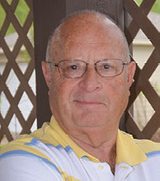U.S. engine builders will have to comply with Stage V for engines sold in Europe, but the days of rubber stamping European regulations may be over at EPA.
Before the 2016 Presidential Election, it would have been a good bet to predict off-road diesel equipment in the U.S. would be following the lead of the Europeans in meeting what they call Stage V emission controls. In the EU, Stage V involves further reductions of particulate matter (PM) in the exhaust stream of off-road diesel-powered equipment beginning in 2019.
“Stage V will be very close to EURO VI on highway emission standards,” says Nils Richardt, product application specialist for Agri & Construction, Shell Lubricants. “Currently, I’m not aware that the U.S. Environmental Protection Agency is working on something similar for the U.S. market.”
Stage V requires low sulfur fuel and the introduction of diesel particulate filters (DPF) in the exhaust gas flow of nearly all diesel-powered equipment in Europe. Also, engine oils required to meet these standards will need to be low ash (SAPS) formulations, such as the new API CK-4 standard.
“For some manufacturers, adopting existing DPF technology will be a simple matter, as some are already using it,” he explains. “For instance, Deutz claims its current engine line is already ‘Stage V ready.’”
Overall, DPF technology is proven and readily available, but carries with it the need for periodic “recharging” (burning off of deposits trapped in the filter) that can be burdensome in applications where an engine is not run at nearly full power for long periods of time.
Richardt says the standards will apply to all off-highway equipment sold in the EU market, including those engines produced by U.S. OEMs for use in Europe. Current Tier 4 requirements in the U.S. exempt many lower power diesel engines, but Stage V would require DPF installations on all new diesel-powered equipment, regardless of displacement or power ratings.
The Trump Card
Throughout the political history of cleansing diesel exhaust, the U.S. has typically followed the lead of the EU in setting standards for off-road diesel equipment. What Europe did, the EPA quickly followed. From low-sulfur diesel requirements through NOx reductions, OEMs and their customers on both sides of the Atlantic have spent billions chasing ever-decreasing emission standard targets.
Now, as President Donald Trump has shown his willingness to withdraw the U.S. from the Paris Climate Accord, and with new management at the EPA, the historic lock-step U.S. adoption of regulations set in Brussels may not be an accurate picture of clean air regulation in the future.
The Paris Accord calls for significant reduction in CO2 emissions from all sources of fossil fuel combustion, so has little to do with Stage V efforts to reduce PM, but the American departure from controversial global initiative signals a significant change from “business as usual.” Also, directives from new EPA Director Scott Pruitt indicate “cost effectiveness” will become an increasingly important part of EPA’s decision making when it comes to mandates. This could produce significant differences in future diesel engine emission equipment requirements across at least 49 of the 50 U.S. states.
Also, regardless of the rosy picture regulators paint of the success of Tiers 1-4 in cleaning diesel emissions, the “cost-benefit-ratio” of the billions of dollars in costs to meet those standards is pointing to even greater change possible in off-road power.
Bigger Changes Coming?
For instance, Kubota’s new WG line of spark-ignited engines offers the rugged build and design of the diesel engines in their lineage, along with RPM and torque bands equivalent to diesels of the same displacement. The WG line ranges from 0.74- 3.8 liters with horsepower ratings from 23.5-97.9 and mirrors Kubota’s compression ignition engines of the same size in both physical dimensions and power output.
The spark-ignited gasoline engines can burn gasoline, propane or natural gas. They also can be set up in dual-fuel applications. The new engines also meet emission standards with proven, simple catalytic converters and off-the-shelf electronic engine controls. And, in the case of Kubota’s WG engine line, they easily fit the engine bays of already-designed equipment using Tier 4 Final Kubota diesel engines.
Spark-ignited engines typically cost less than an equivalent Tier 4 Final diesel engines and they burn widely available, less expensive fuels.
No one is predicting high horsepower diesel engines in farm equipment will soon be replaced by spark-ignited engines, but the fact that a major engine builder has unveiled this technology in the displacement range of engines soon to be touched by Stage V in Europe, shows the economics of politically-designed diesel engines is reaching a breaking point. Years of government mandates have forever altered the diesel engine market and OEM engineers are looking fervently at alternatives.







